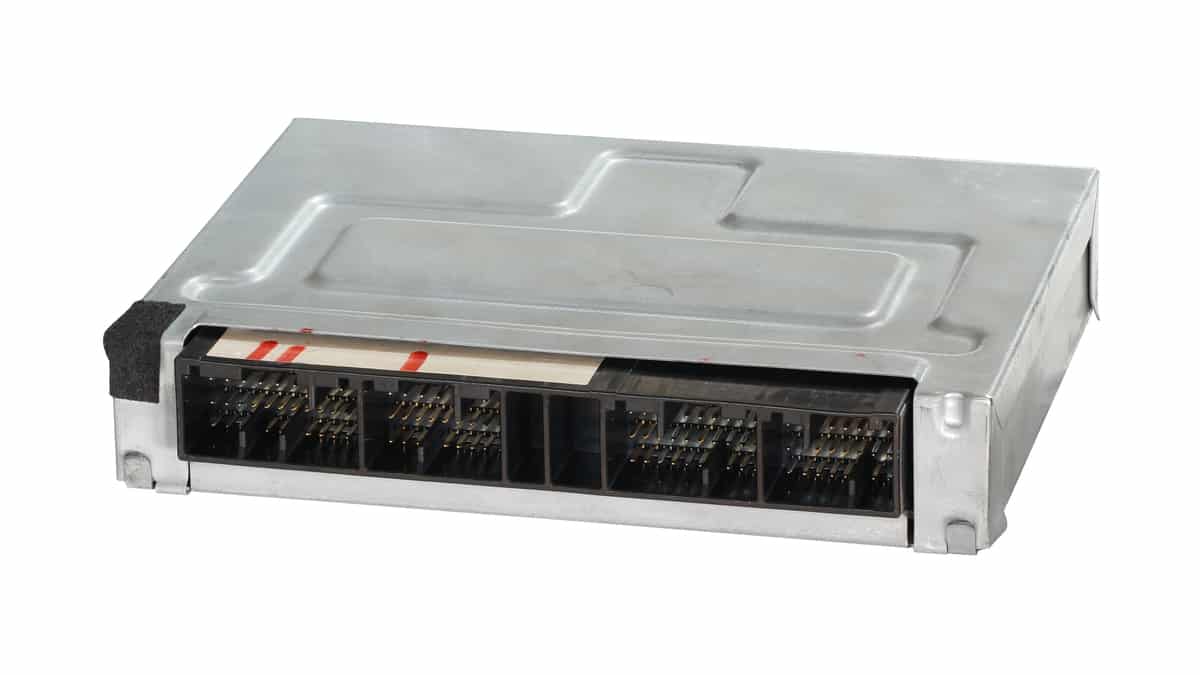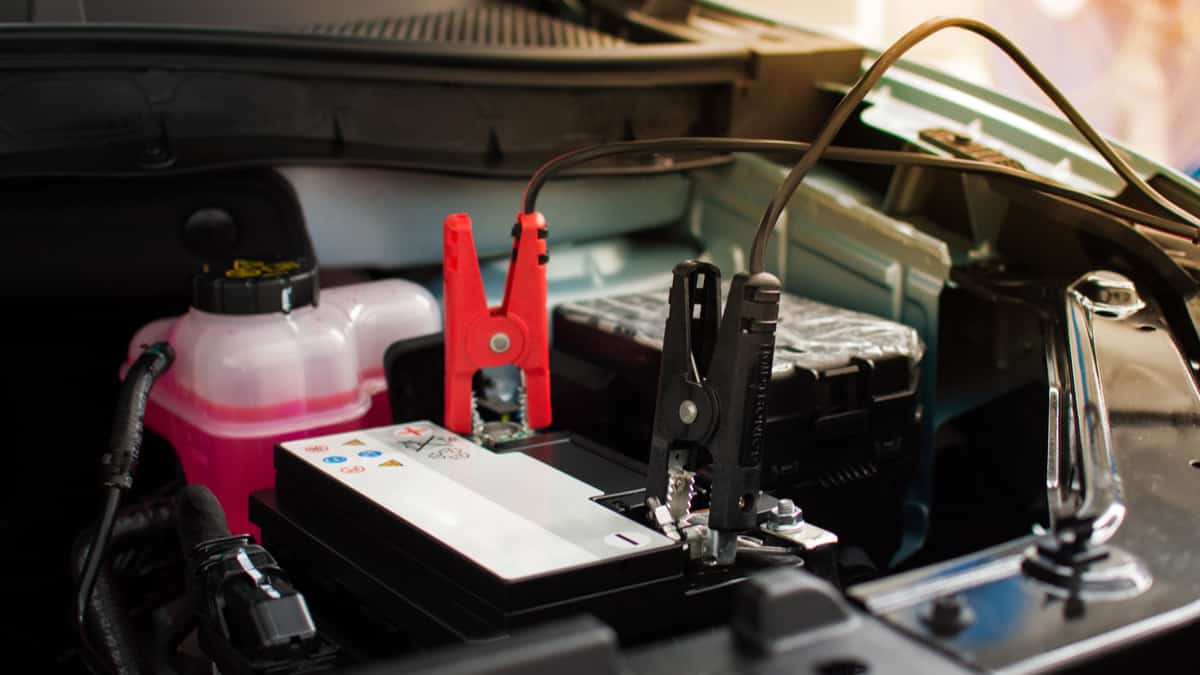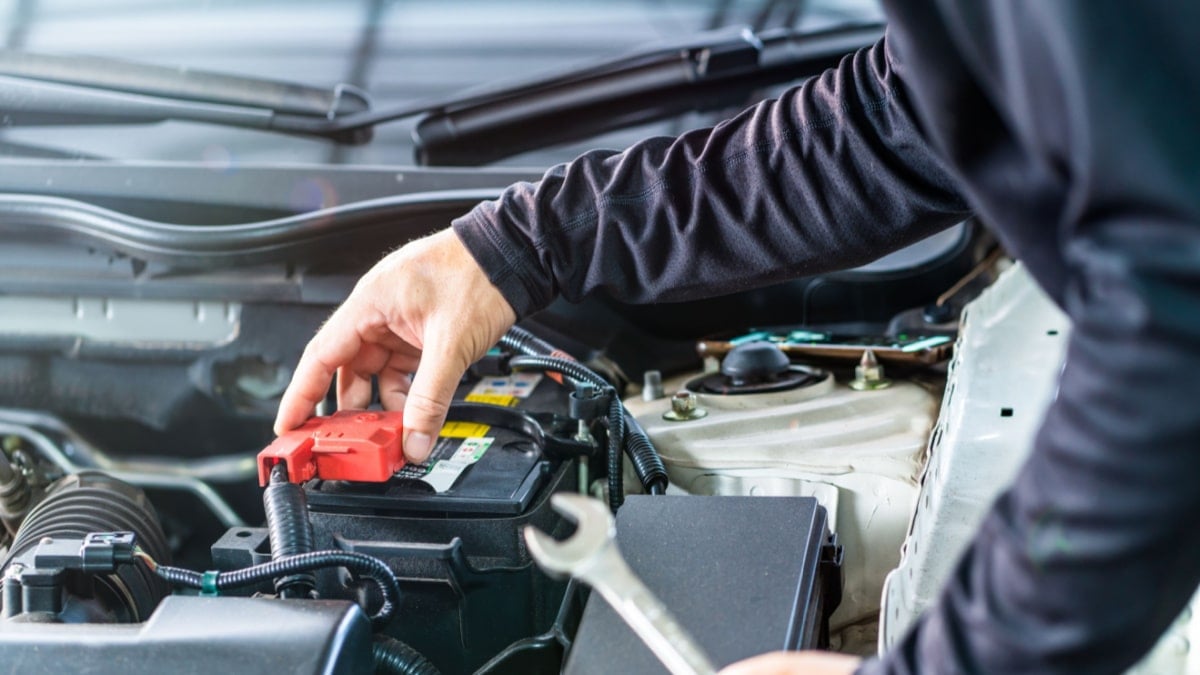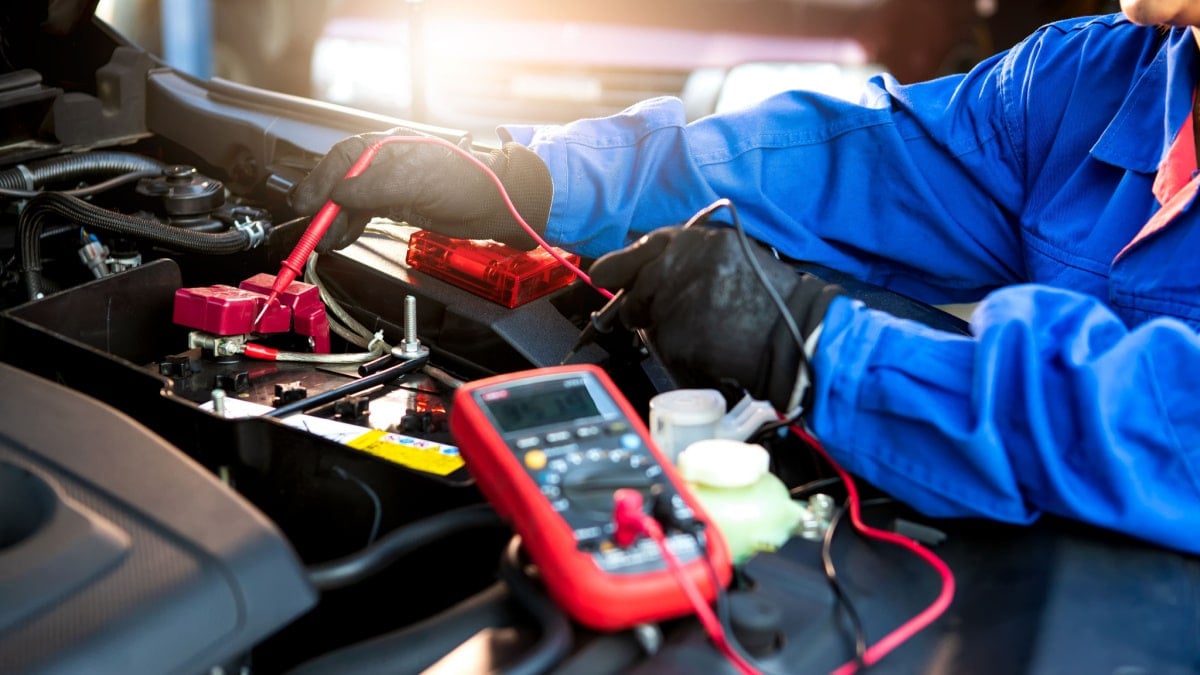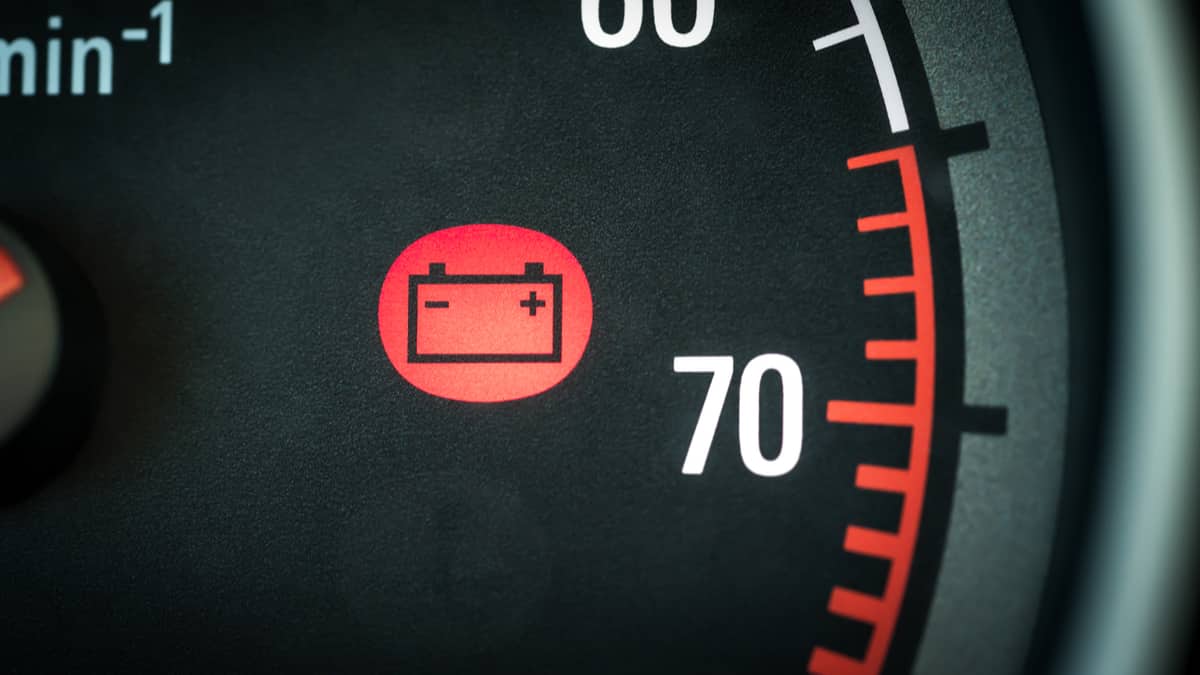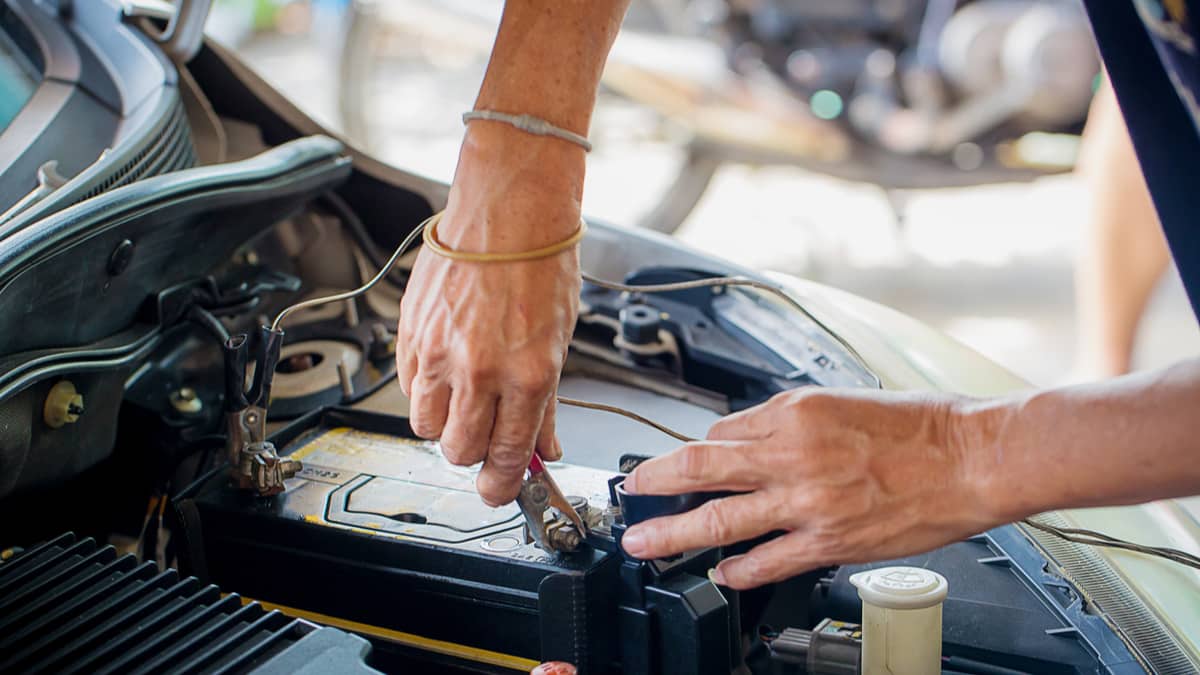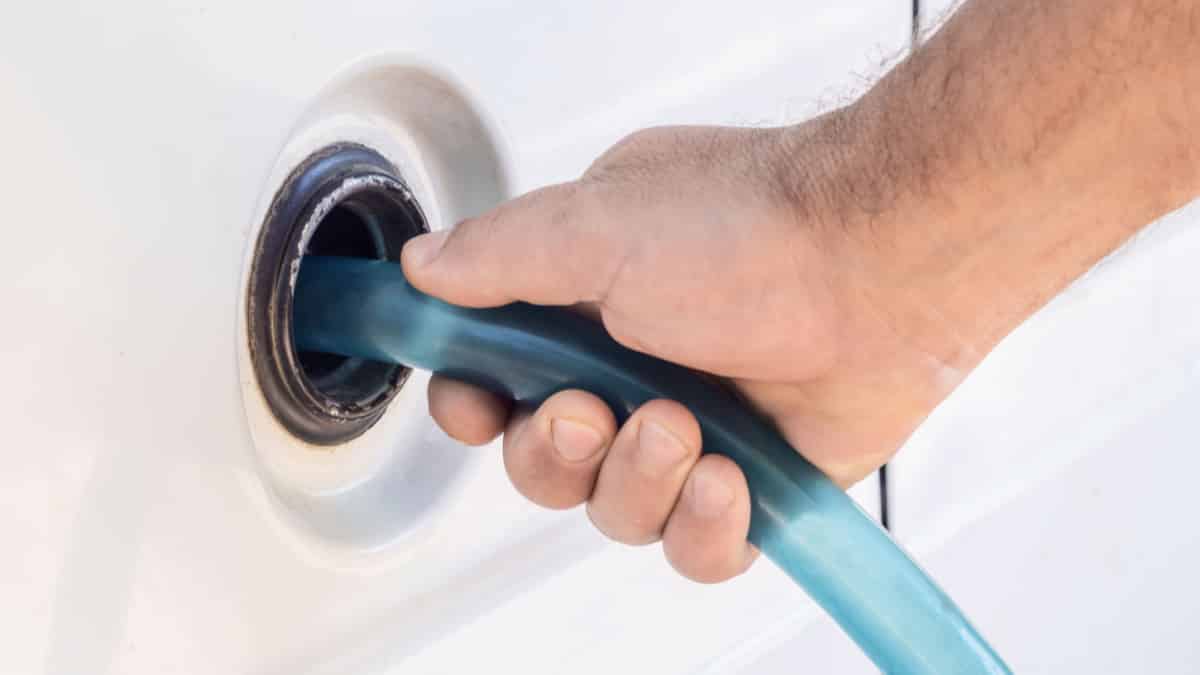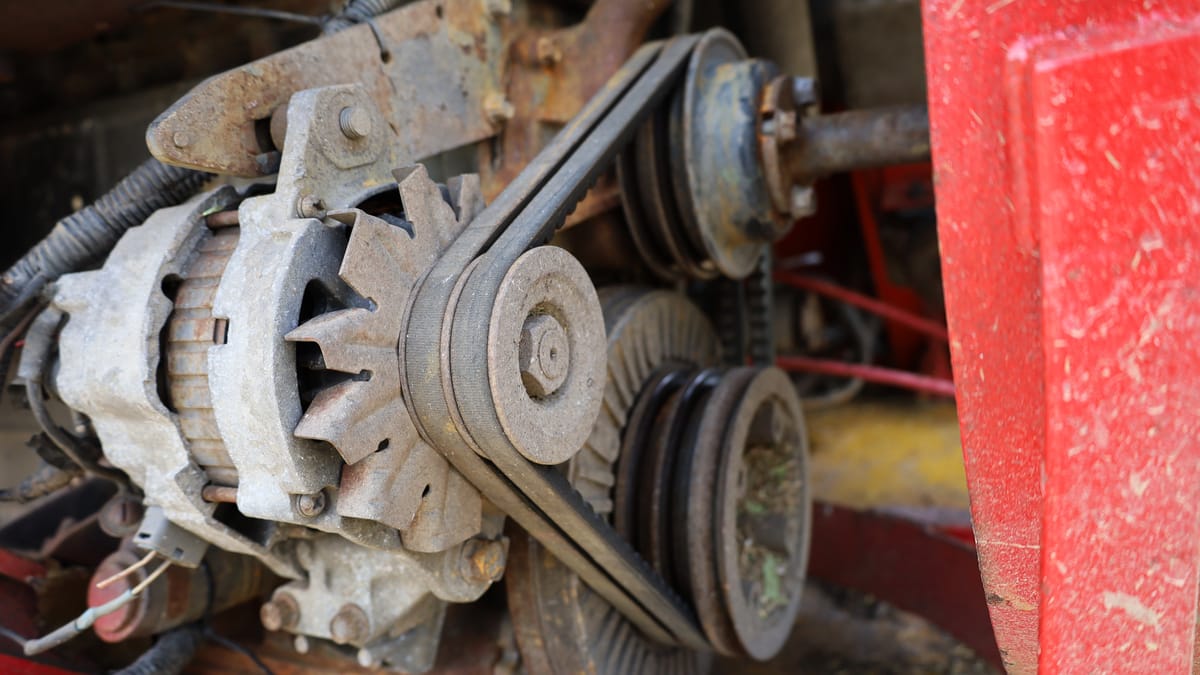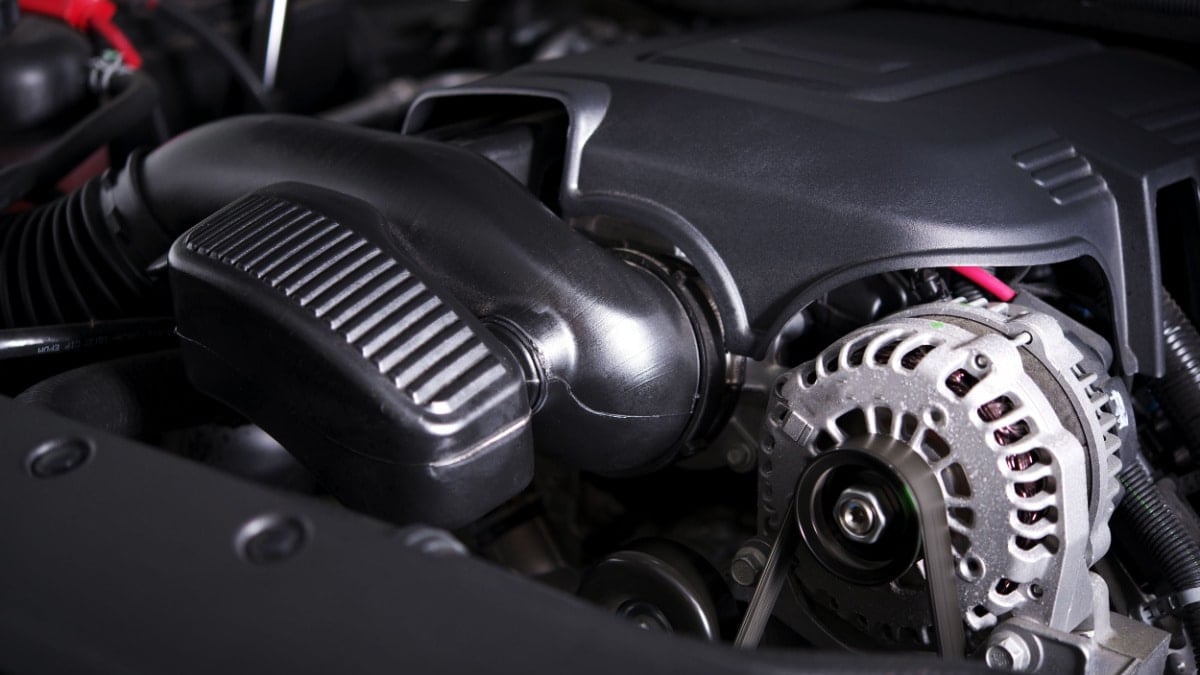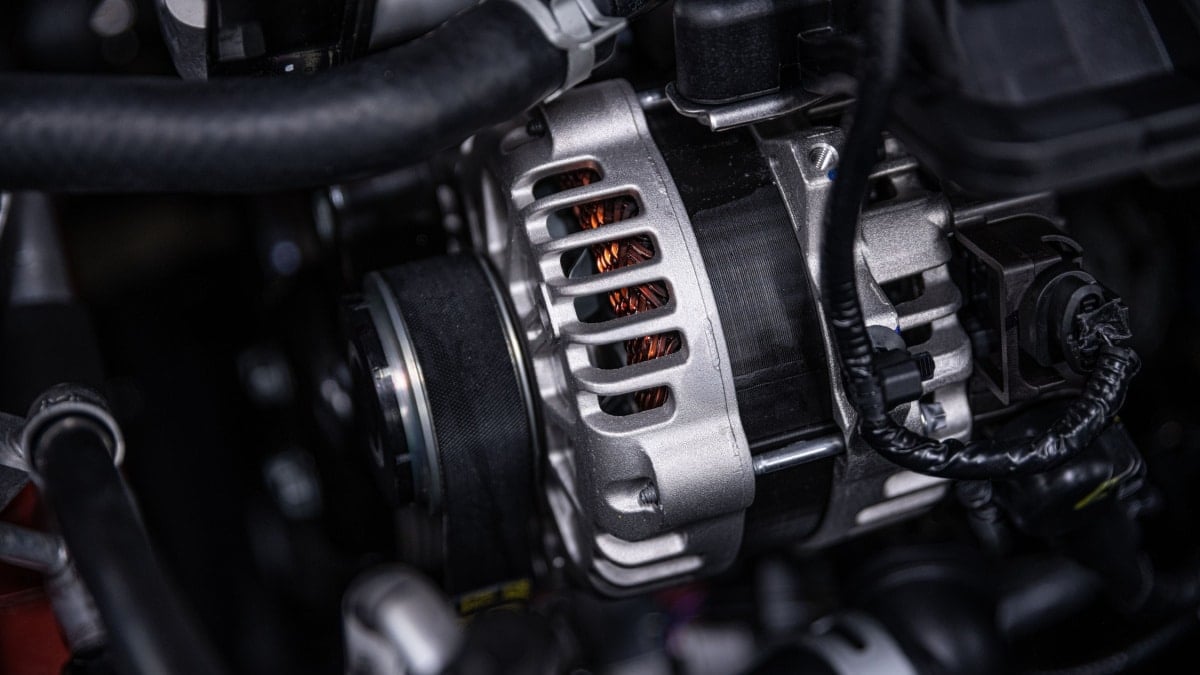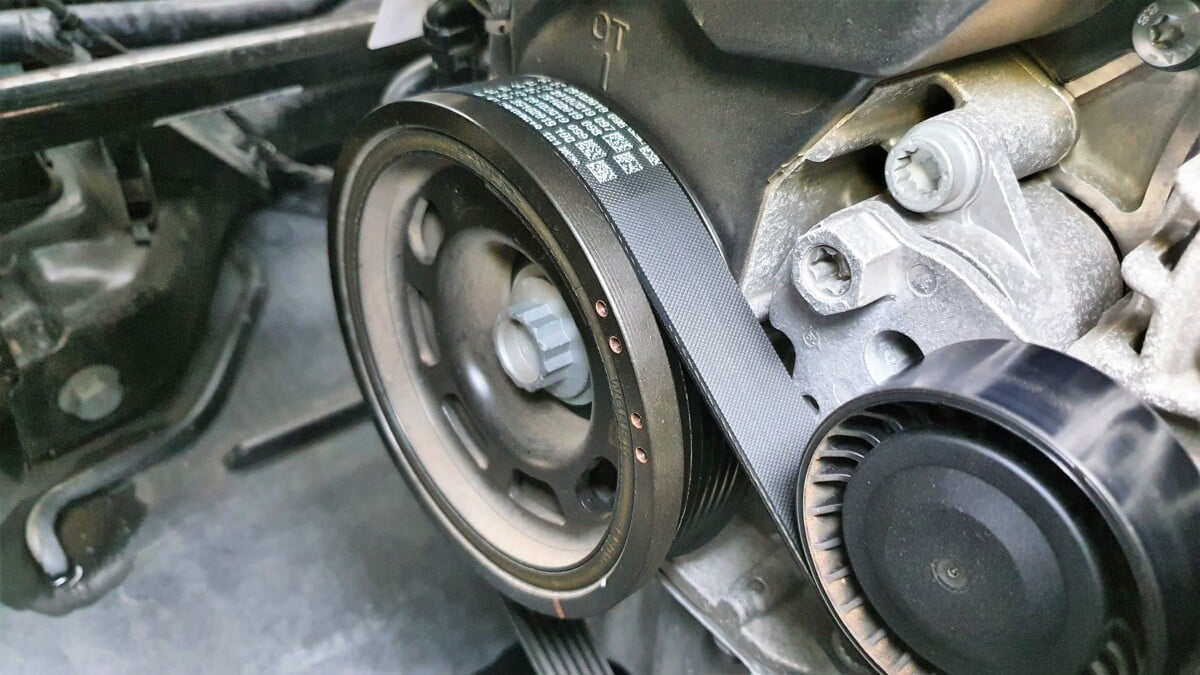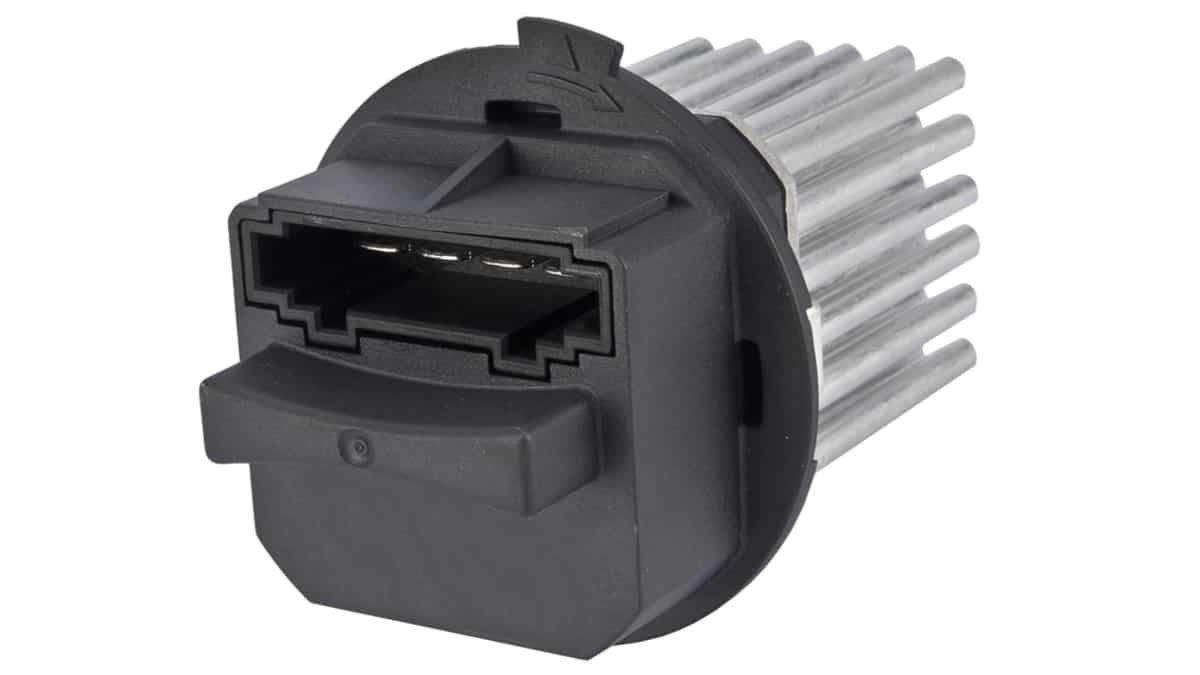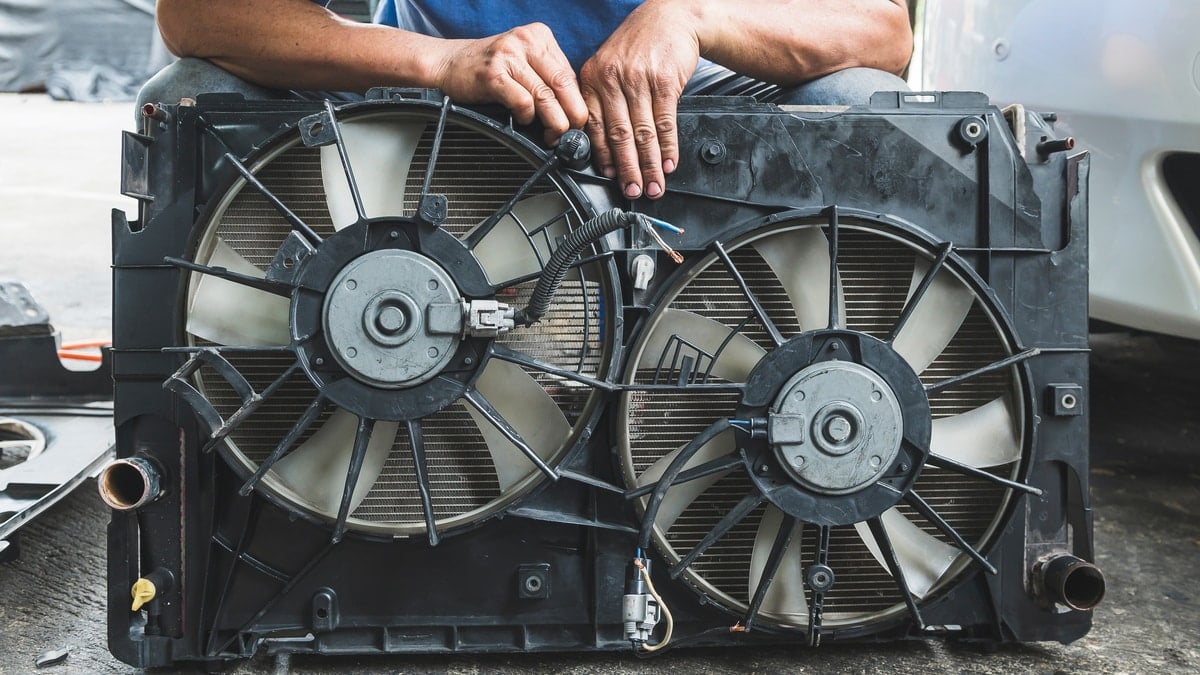Many people mistake the symptoms of a bad alternator for a failing car battery because they are very similar. Once you replace the battery and have the same thing happen again, you may discover that the problem was the alternator all along. Or, you could become familiar with the bad alternator symptoms to recognize the differences.
Not only do I review these top symptoms, but I also look at how to diagnose the system. This guide goes on further to describe the purpose of the alternator, its location, and the average replacement cost. Finally, you gain some answers to questions that may have been on your mind.
Symptoms Of A Bad Alternator
You may see the battery warning light on your dash when an alternator fails. It can also cause dim or overly bright lights, a dead car battery, malfunctioning accessories, or flickering lights. You may have trouble starting the car, hear unexpected noises, or deal with a stalling car engine.
Some of these symptoms also occur with a dead car battery, so let’s look at them in detail.
1. Battery Warning Light
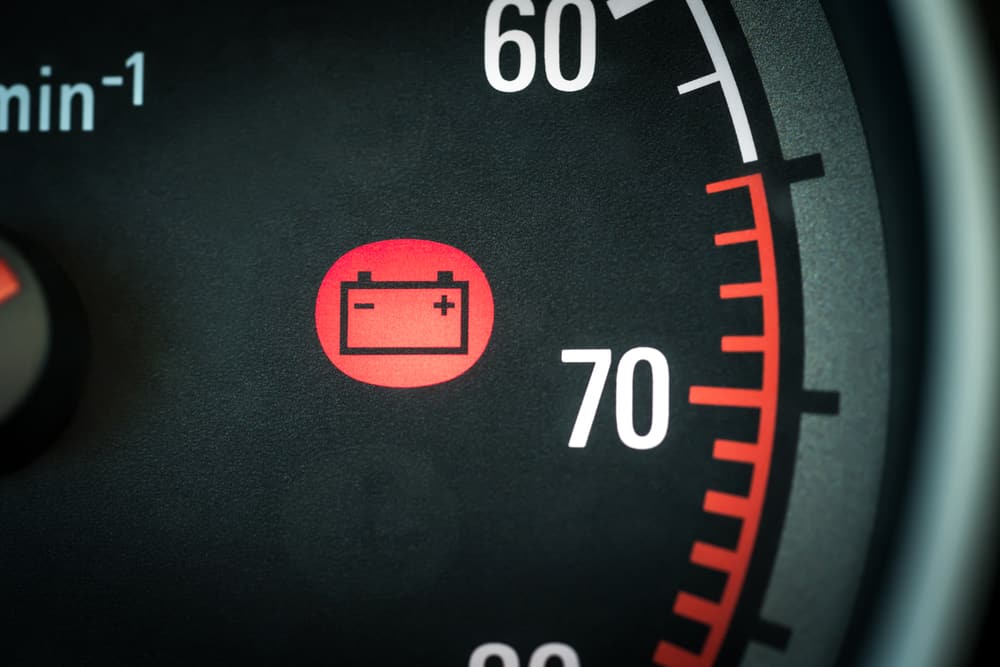
The dashboard battery indicator, or battery light, is one of the warning messages to come on the dash when there’s a problem. This light resembles a battery, letting you know there’s something wrong with the charging system.
In most cases, it does not indicate a dead battery, just because the symbol is a battery. The battery light comes on when the engine is running, but the voltage is low. This is often caused by a bad alternator rather than a bad battery. That’s why it’s important to follow our diagnostic steps listed below.
With that said, the dashboard warning light doesn’t always come on with enough notice to do anything different. You may only see the warning as the battery is dying and the car is coming to a stop.
2. Dim Or Overly Bright Lights

When the headlights get dim, it’s a sign that the battery or alternator can’t produce enough power to light them. As the battery loses more charge, the headlights shine less.
However, if the lights get brighter when you rev up the engine, it could indicate that there is some current being produced by the alternator. Yet, this power isn’t enough to keep the battery charged and the headlights running normally.
3. Dead Battery
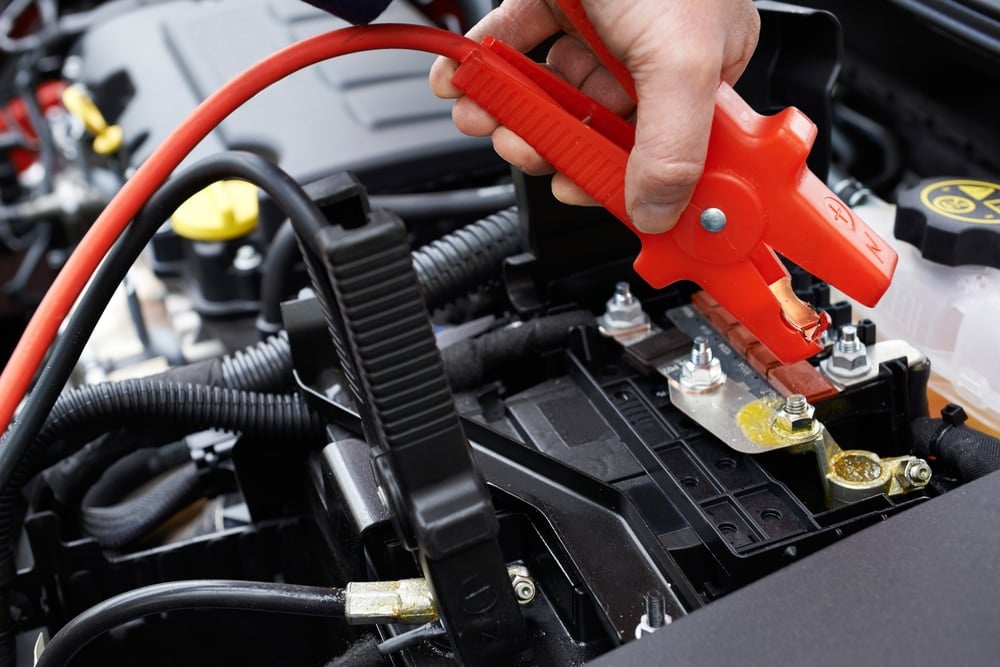
Your car battery is needed to start the engine and keep various accessories running when the motor isn’t on. As the power drains down in the battery, it no longer functions as it should. Yet, when you drive, the alternator produces a current that refills the battery’s reserves.
If the alternator isn’t charging the battery, it’s going to continue dying. You may be able to jump-start it to get the car going, but the battery won’t keep running without something charging it.
4. Malfunctioning Accessories
The accessories in your vehicle also rely on the power from the alternator and car battery. If the windows seem sluggish going up or the seat warmers aren’t working correctly, there could be a problem with the alternator.
Additionally, you may notice that some of the gauges or electronics in your car seem to have a mind of their own. This often results from the wrong amount of voltage being pumped out of the alternator.
5. Trouble Starting
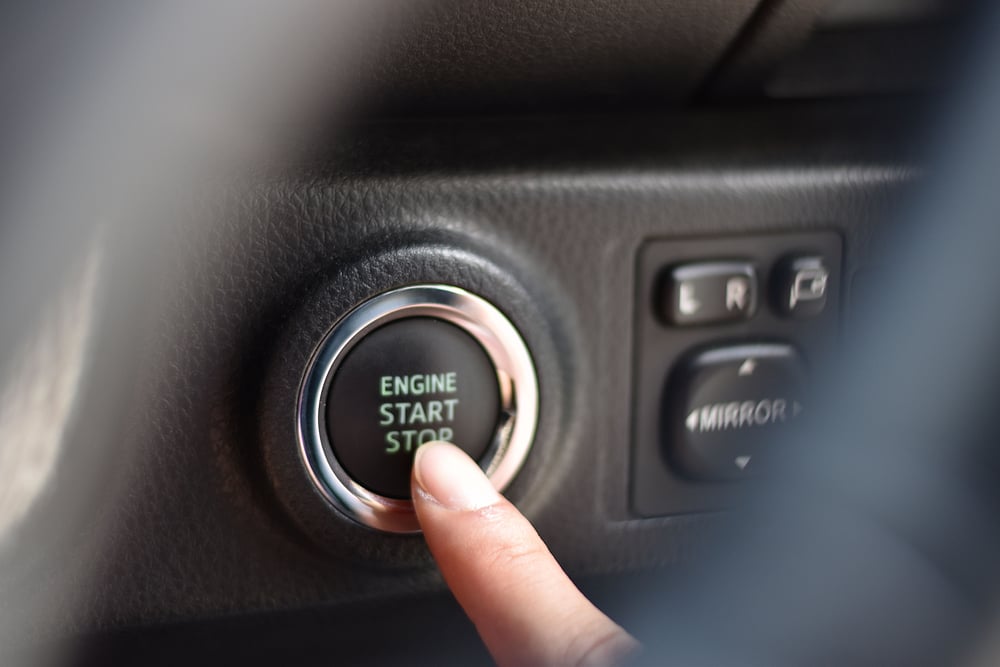
If the car battery dies because you’ve left your headlights on, the engine isn’t going to start. You will turn the key and only hear a clicking sound, leaving you needing a jump-start.
However, if the battery continues to die for what seems like no reason, it could be that the alternator has failed. It’s no longer providing a charge to the battery while you drive.
6. Flickering Lights
I’ve already discussed what happens when the lights go dim and get bright again. So, what does it mean if the lights on your dash or your headlights are flickering?
It could mean that the alternator is failing but still providing some juice. As the voltage changes, the lights receive a varying amount of power that causes them to act sporadic. Eventually, the alternator is going to fail and all power will be lost.
7. Unexpected Noises
Whenever the car makes an unusual sound, you take notice. The sound of a failing alternator is unique and distinguishable from many others.
As the drive belt responsible for turning the alternator starts to rub or becomes misaligned, you may hear a whining or growling sound. This is also the sound heard when the bearings fail or the rotor shaft is bad. Either way, you need to replace the alternator.
8. Stalling Engine
The alternator is responsible for creating enough power to keep the car running. If it’s not charging the battery and the battery dies, no more power will be available.
Therefore, the car is going to stall. When you attempt to restart the engine, you’ll notice that it acts like the battery is dead. If you get it going momentarily, it will stop running once you disconnect the jumper cables or box because no power is produced.
What Is An Alternator?
The alternator charges the car battery while the engine is running. When starting a car, the battery uses a lot of energy to provide the power needed to get the motor running. This energy is resupplied by the alternator, which operates like a generator.
The alternator also powers most of the car’s electronics while the engine runs. It’s responsible for keeping the headlights, windshield wipers, dashboard display, radio, power windows, and heated seats operational. All of these accessories receive direct current (DC) power from the alternator.
The alternator operates by creating electrical energy out of mechanical energy. As the engine runs, a drive belt is powered and wraps around the pulley connected to the alternator. This pulley rotates the rotor shaft on the alternator, causing the magnets around a coil to spin. As the magnets spin, alternating current (AC) is generated around the coil. This power is channeled into the rectifier, where it’s converted into DC power.
Where Is The Alternator Located?
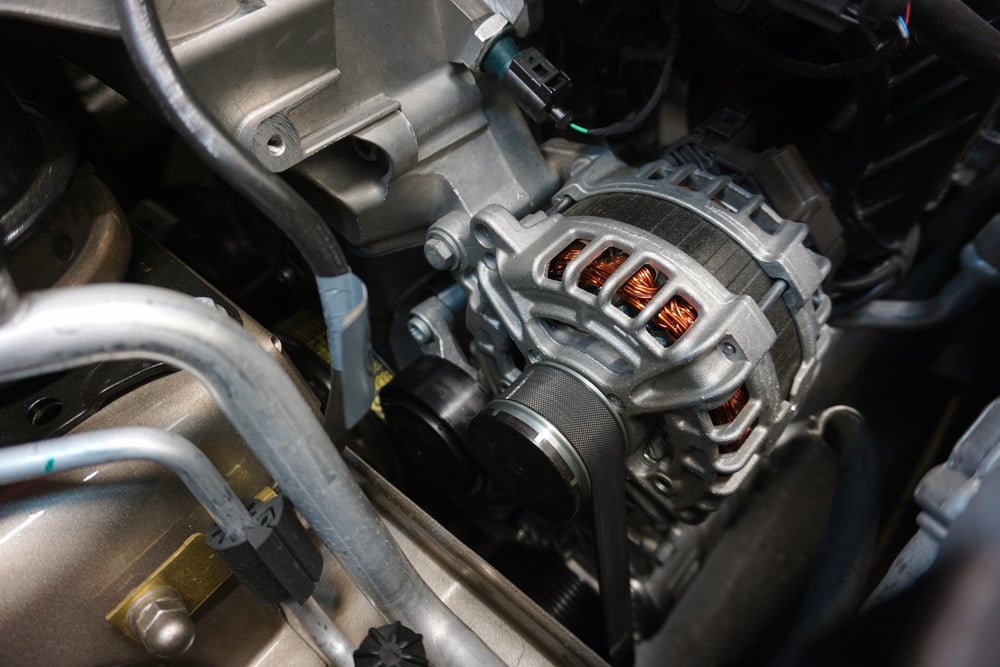
The alternator is located under the hood, bolted to one side of the engine. It has a cylindrical shape and is large. There’s also sometimes a fan located on one end to provide cooling.
The side with the fan is connected to the drive belt. This drive belt is driven by the engine’s rotation. When the belt spins, the alternator works to create electricity.
You can pinpoint the location of the alternator quickly if you trace the path of the drive belt. There should be a diagram located under the hood of your car. If you can’t find the alternator or the path of your drive belt, I recommend referencing the service manual.
How Do You Test An Alternator?
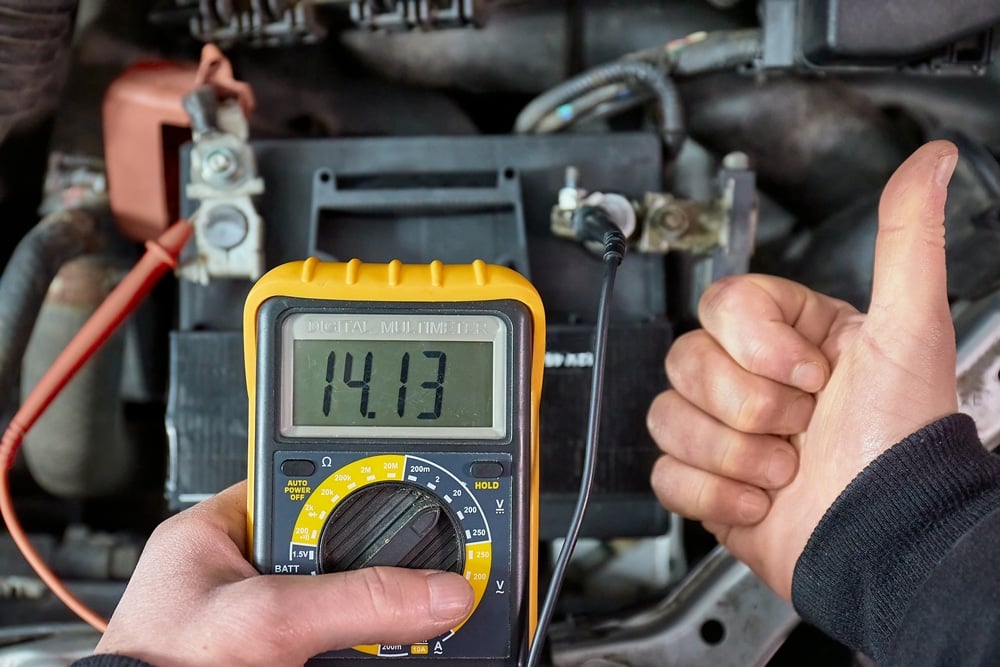
You can visit most auto parts stores for free alternator testing. However, I also understand the value of learning to diagnose automotive parts at home. As a professional mechanic, here are the steps I would take to test the alternator.
- Set your multimeter to read DC voltage above 15.
- Clean off the battery terminals to ensure an accurate reading.
- Place the black multimeter cable on the negative terminal.
- Place the red multimeter cable on the positive terminal.
- The reading should be around 12.6 volts.
- Start the car and double-check the reading.
- It should have increased to 13.5 to 14.5 volts.
If the reading is higher, then the alternator is supplying too much voltage. On the other hand, anything less than 13.5 volts shows that the alternator isn’t charging the battery.
LEARN MORE: How to Test a Car Alternator (5 Steps)
How Much Does It Cost To Replace An Alternator?
On average, you may spend between $250 and $850 to have the alternator replaced professionally. Expect to spend around $200 to $500 on the alternator, while the rest of the cost is for labor. If you can install the alternator at home, you will save a small amount of money.
The price you spend to have the alternator replaced varies depending on what type of car you drive. It also matters where you live to determine what the average labor rate is.
How Do You Know If It’s A Bad Alternator Or Battery?
If your car battery is dead and you jump-start it, the vehicle should continue to run unless the battery can’t hold a charge or the alternator isn’t charging it. Check the voltage as shown in our instructions above to see what’s going wrong.
You may also replace the battery with a new one if you think it is to blame. However, if that battery also dies, your alternator should be replaced.
How does a car act when the alternator is going out?
The battery warning light often comes on and the headlights or accessories may start to act strange. You may have trouble starting the car or it could begin stalling. Additionally, there could be some odd noises and flickering lights as the alternator begins to die.
Can a car run with a bad alternator?
If the battery is fully charged, the car will continue running until there is no more juice left in it. Once the battery drains, you won’t be able to start the car again without jumper cables or a jumper box. For this reason, it’s best to replace the bad alternator at the first sign of trouble.
Do alternators go out suddenly?
The alternator can give you many warning signs before it fails completely. We’ve listed some of those warning signs above. However, the alternator can also fail without any warning, so you need to be prepared to replace it at any time.
How many miles until the alternator fails?
The alternator isn’t a part that should be replaced with regular maintenance. Yet, it’s also not going to last the lifetime of the vehicle, in most cases. On average, an alternator will last between 80,000 to 150,000 miles, which is far longer than your typical car battery.
What does a bad alternator sound like?
The bad alternator can make a variety of noises, depending on what’s going on. If the belt is just slipping, you may hear a whining noise. However, internal failure of the alternator will often lead to a growling or groaning as the bearings or rotor shaft fail.
It’s not uncommon for alternators to fail, which is why this repair is one that most of us professional mechanics are used to. Even if you’ve never replaced an alternator before, it isn’t too difficult in most cars, especially if you have some mechanical experience. You won’t save a lot of money by replacing the alternator yourself, but you will end up with a sense of accomplishment.
Test the battery and alternator when charging problems occur to determine which one is to blame. If you figure out the alternator is a problem, it’s best to replace it before it dies completely. Otherwise, you could become stranded in a parking lot somewhere, waiting for a tow truck.

